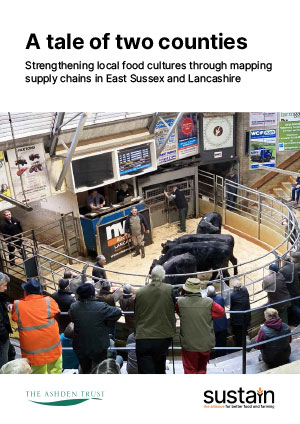The food supply chain in the UK has become highly centralised and opaque. This has clearly led to several environmental, economic and social issues domestically and overseas. Those concerns have an impact on people and enterprise at the local level. With the UK Government seeking to ‘level up’ the country, now is the time to channel investment into localised food systems and infrastructure.
To understand what needs to be invested in at that local scale, we set out to map supply chain infrastructure in two counties – East Sussex and Lancashire. Our aims were to find out what infrastructure exists, whether it contributes directly to the local food system, what farm types there are in the counties, and therefore, where the gaps in infrastructure are that need to be invested in.
Here is a summary of what we found:
 A tale of two counties: Strengthening local food cultures through mapping supply chains in East Sussex and Lancashire
A tale of two counties: Strengthening local food cultures through mapping supply chains in East Sussex and Lancashire
36pp - 2022 | 1810Kb
© Sustain 2025 Registered charity (no. 1018643) Data privacy & cookies